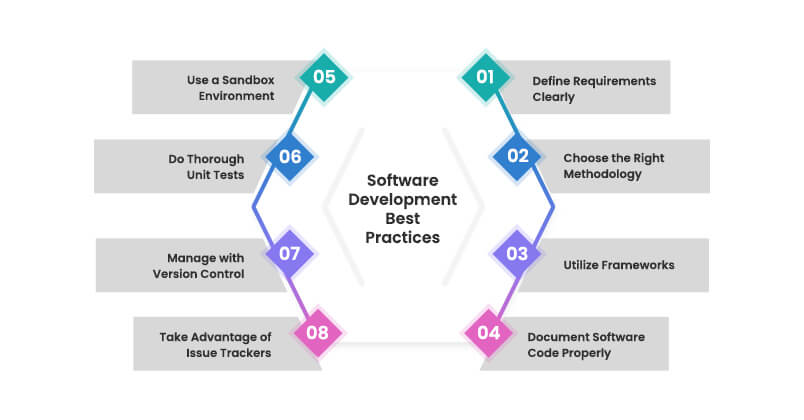-
solutinos
-
Hire
Frontend Developer
Backend Developer
-
NodeJS Developer
-
Java Developer
-
Django Developer
-
Spring Boot Developer
-
Python Developer
-
Golang Developer
-
Ruby on Rails Developer
-
Laravel Developer
-
.NET Developer
Technology
-
Flutter Developer
-
React Native Developer
-
Xamarin Developer
-
Kotlin Developer
-
Cross-Platform Developer
-
Swift Developer
-
MongoDB Developer
-
C Developer
-
Smart Contract Developers
Cloud
-
-
Services
Mobile Development
Web Development
- Work
-
Multi Services App
-
Food Delivery App
-
Grocery Delivery App
-
Taxi Cab Booking App
-
Multi Services App
-
OTT Platform APP
-
Social Media APP
-
Freelance Service App
-
Car Rental App
-
Medicine Delivery App
-
Liquor Delivery App
-
Sports Betting App
-
Online Coupon App
-
eLearning App
-
Logistics & Transportation App
-
Courier Delivery App
-
On-Demand Real Estate App
-
E-Wallet APP
-
Online Dating App
-
Handyman Services App
-
-
Process
-
Company

Quick Summary : Understand custom software development methodologies to build high performing solutions based on business requirements. In this blog post, we will explore best practices of sofwtare development to deliver high performing and engaging apps tailored to unique needs.These practices and differnet assist in designing and developing apps by using most suitable development approach.
In the transforming technological world, choosing the most reliable software development methodology is essential to creating high-quality software and completing projects successfully. Custom software development methodologies help the design and development team plan, collaborate, and implement the project. By streamlining the software development life cycle (SDLC), this enhances the quality, efficiency, and outcomes.
Choosing the right development method for custom software is a big decision. This choice should only be made after thoroughly understanding every aspect of the project. Custom software development companies can adequately begin the project by carefully analyzing the complexities, client needs, and available resources.
Statistics on the Software Market and App Development Market
In the global Software market, revenue is projected to reach $704.10 billion in 2024. Enterprise Software leads the market with an expected volume of $295.20 billion in 2024. The Software market is anticipated to grow at an annual rate (CAGR 2024-2029) of 5.01%, reaching a market volume of $898.90 billion by 2029. The United States will also lead in this sector, generating the highest revenue of $363.40 billion in 2024.
Revenue in the Application Development Software market is expected to reach $182.70 billion in 2024. The market is projected to grow at an annual rate (CAGR 2024-2029) of 6.53%, resulting in a market volume of $250.70 billion by 2029. The United States will generate the most revenue globally, estimated at $91.95 billion in 2024.

Get access to custom software development consulting from experts now to transform your business!
Connect With Us Connect With UsWhat is Software Development Methodology?
Software development methodologies play an important role in creating high-performing and feature-rich software. Developers use them to stay updated with current trends and fulfill unique business needs. This approach provides pre-determined software development processes to smoothen the software building procedure. Software development methodologies are structured processes that guide software creation from the idea stage to delivery.
A software development methodology is a system used to organize, plan, and manage the creation of an information system. This methodology focuses on technical details and requires the development team to plan the software development lifecycle carefully. Without the right processes, finishing a long-term project on time is very difficult, especially when stakeholders are involved, as is often the case in software development. The success of software development teams hinges on having a clear and robust system in place. This system, often in the form of a software development methodology, provides structure and guidance, ensuring that projects are completed successfully.
Different projects and teams face unique problems and challenges, so no single software development methodology works for everyone. Instead, the choice of methods depends on the technologies being used, the complexity of the project, and the size of the team.
Software Development Approaches
Several software development models exist depending on the project requirements. All approaches have different advantages and drawbacks that make them suitable for the client’s needs.
Agile Software Development Methodology
The agile development approach is one of the best software development methods used to design and develop software. Developers create custom apps by using this app development process and making alterations based on the project's needs. This approach is the incremental development model with a focus on high-quality software. It is a conceptual method to undertake several software engineering projects. When using this development method, the project is divided into small milestones and tasks with pre-determined timeframe. This enables transparent communication and smooth operations between the stakeholders.
Waterfall Development Methodology
The waterfall model is one of the widely used development methodologies between developers. This is easy to learn and use, highlighting it as a popular choice for developers. In this model, every activity and task is streamlined in a cascading and linear sequential manner. This method's necessary aspect is to complete each stage's task before proceeding with the next phase. As the classic development model, this doesn't allow us to return to the previous stage and handle required changes in the project needs.
Scrum Development Methodology
The Scrum development model is a flexible software development method that uses basic agile concepts. It follows an iterative and incremental approach to creating high-tech software. With a self-organized and dedicated team, it becomes easy to make changes and update the developed software based on market trends. Teamwork towards a common objective involves scheduling purposeful meetings regarding required technologies. It also involves role-based management of teams like scrum master, software owner, and dedicated development team.
The software owner gathers project requirements and ensures that the team follows them. On the other hand, the scrum master ensures that the team is experienced with the scrum development model. This model is easily implemented in all projects due to its flexibility and adaptability.
Leverage our expertise for Streamlined software development solutions by ensuring high performance!
DevOps Methodology
DevOps is a popular approach that provides several benefits to customers. The traditional separation of Development and Operations differs from the DevOps concept. In DevOps, these two divisions work together as one team throughout the entire lifecycle of a project. This approach benefits all businesses by enabling continuous integration and delivery, allowing development, quality assurance, security, and other operations to happen simultaneously. Many companies are now adopting DevOps because it is an agile and lean approach that fosters better collaboration at every stage of the development process.
Lean Development Methodology
An approach used in creating changeable software based on the changing requirements is the Lean development approach. This model is a strategically focused approach as compared to other methodologies. The primary objective of this model is to build optimized software in ⅓ time and save cost. This is because it involves less workflow and a shorter development process.
Spiral Development Model
The spiral development approach focuses on early determination and reducing potential risks. This model is suitable for developers who start on a small scale and explore potential issues. It also involves creating strategies to handle diverse risks and deciding the next stage of the project. The project success criteria are dependent on the project management team.
Prototype Methodology
A software development approach allows developers to build prototypes of the software. This prototype displays the required features and functionalities to clients. Using the prototype model, it becomes easy to make the necessary changes in the design and features before developing an app. This methodology easily solves diverse issues that usually occur in the waterfall model.
Rapid Application Development (RAD)
RAD is an enhanced development model that ensures quick app development with top-notch quality compared to other approaches. This model is created to leverage the maximum capabilities of software development. The primary goal of rapid application development methodology is to boost the software development life cycle. This can be achieved by the active participation of users throughout the development cycle.
V-shaped Development Model
The V-shaped development model, also known as the Verification and Validation model, is a variation of the traditional waterfall model. It follows a sequential design process where each development stage has a corresponding testing phase, ensuring that validation occurs throughout the project. The model is in a "V" shape: the left represents development activities, and the right represents testing activities. The point where the two sides meet represents the completion of the development phase and the start of the testing phase.
On the left side of the "V," the process begins with requirements analysis, where the project's needs are defined. This is followed by system design, breaking down the requirements into detailed specifications. The next step is implementation, where the actual coding takes place. As each development phase is completed, the corresponding testing phase on the right side of the "V" begins. This includes unit testing (testing individual components), integration testing (ensuring components work together), and system testing (validating the entire system). The base of the "V" connects the development and testing phases, emphasizing that each phase must be validated before moving to the next.
Although the V-shaped model is transparent and highlights early testing, it is not as popular because it lacks flexibility. It works best for projects with well-defined needs and minimal changes, but it may not be suitable for projects that need regular adjustments or iterative development.
Software Development Best Practices

Custom software development helps in fulfilling the unique needs of clients. Several app development and project management methodologies assist in creating high-quality software for every business. Let’s evaluate the best practices of software development to build improved applications for multiple platforms.
Define Requirements Clearly
Requirements can be described as the road map to a software project since they specify what should be done, how it should be done, and what the end user is entitled to expect. Hence, one must have clear requirements to enable the development of better software applications. The users, customers, and business analysts must provide input to ensure that all provisions are seized and are accurate. The documentation of these is usually done by preparing a Software Requirement Specification (SRS) document. For instance, when designing software for a bank, components specified in the SRS might be checking account balances, fund transfers, and safe accommodation for customers' information. It should also list the required security features, protocols, and document handling policies.
Choose the Right Methodology
Agile and waterfall are software development methods in the current business environment. In each case, the choice depends on the nature of the intended project and the specific expected result. Another practice is the flexible approach of agile development, which deals with continuous improvements of the team efforts. It can be effective in projects that require frequent updates, like web or mobile applications. Waterfall is one of the most rigid project management methodologies ideal for building business landing pages since there are set time constraints and aims. In choosing a methodology, the flexibility of requirements, the size of the project, and how much time is needed are considered.
Utilize Frameworks
Frameworks contain code and many procedures that developers can easily copy and paste to complete the work in the shortest time possible. They can be coded for any specific programming language and various platforms. When choosing a framework, the language, the project's demands, security, options, stability, documentation, and the community are essential points.
Document Software Code Properly
Proper code documentation is essential for understanding, maintaining, and updating software. It helps new developers quickly grasp the project. Adequate documentation includes comments, inline documentation, and external documentation. Essential items to document include a README file, issue tracker, API documentation, coding conventions, contributor guidelines, citation information, and licensing information.

Transform your internal operations with custom business software development services and stay ahead of the curve!
Contact Our ExpertsContact Our ExpertsTake Advantage of Issue Trackers
An issue tracker records and manages problems users encounter with your software, enabling support agents, engineers, and managers to monitor and resolve issues. It provides transparency and helps prevent small issues from becoming more significant problems. Tools like Zendesk, ClickUp, and GitLab are helpful for tracking issues.
Manage with Version Control
A version control system mainly deals with tracking the various changes made to the software code, where developers can work with different versions of a code and potentially build a previous one in case of any problem. Version control is always helpful for any project as it tracks change, assists multiple people working on a project, is used in correcting errors, identifying and solving problems, and integrates changes from different subdivisions. Popular systems include Git and SVN.
Do Thorough Unit Tests
Unit testing involves checking individual code components to ensure they work correctly. Benefits include early bug detection, enhanced code quality, reduced development costs, and increased customer satisfaction. Test both standard and failure scenarios to see how your code handles them. Use code coverage tools to measure test coverage, ensuring comprehensive examination and reliable software.
Use a Sandbox Environment
Sandboxing isolates code, keeping it away from unauthorized resources and minimizing damage from bugs or vulnerabilities. By providing a secure, controlled environment, it enhances security, controls resource access, improves software performance, and simplifies development and testing. This helps reduce risks and errors during development.
Conclusion
A suitable software development model is considered necessary to fulfill the project requirements. Popular software development approaches work accurately based on the project size, type, and specifications. This is because not all projects are the same, and a specific development model works for one project but may not work for another. So, it is essential to choose a suitable development methodology. For software developers, it is vital to gather project requirements before selecting a development approach. For better results, it is always advisable to approach a customized software development company or hire software developers.
Frequently Asked Questions
-
What do you mean by software development
methodology?
Software development methodologies are detailed guidelines that assist developers in effective project management processes. Based on requirements, several development approaches are used for both large and small projects. In other words, they are also referred to as SDLC (software development life cycle) methodologies.
-
What are the popular software development
methodologies?
Several software development methodologies can be used based on the project requirements. Some of the famous approaches are:
- Agile software development approach
- Scrum software development approach
- DevOps methodology
- Waterfall development approach
-
What is the process of software development?
Software development can be done by following the pre-determined steps:
- Research and planning
- Design and prototyping
- Development
- Testing and deployment
- Support and maintenance
